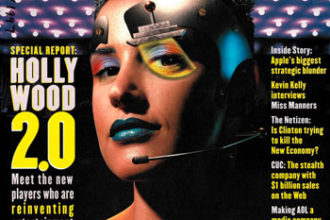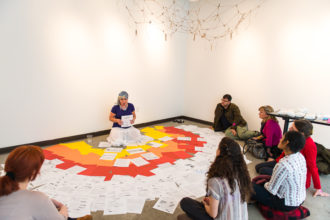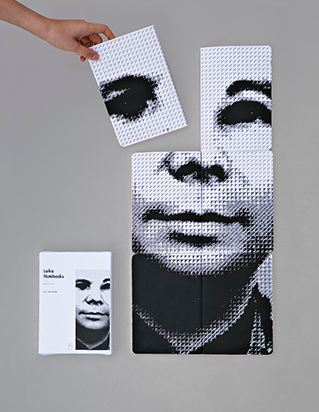Pandemic 1.0
Title: Pandemic 1.0
Status: 2009 – 2011
Type of Project: Short Film, Immersive Installation, Gaming, Browser + Mobile App, & Live Event
My Role: Co-Writer, Director, Producer & Experience Designer,
Project Description: A mysterious virus begins to affect the adults in a small rural town, and the youth soon find themselves cut off from civilization, fighting for their lives. How fast is the virus spreading? It is confirmed—the virus has hit Park City. Can you survive? Pandemic 1.0, a transmedia storytelling experience, unites film, mobile and online technologies, props, social gaming, and data visualization, enabling audiences to step into the shoes of the pandemic protagonists anytime during the day. Mission Control is the only way to learn where you stand in the face of the spreading pandemic.
Pandemic 1.0 is part of a larger storytelling experience involving film, mobile, online, social gaming, print, and real world interactions. An official selection at the Sundance Film Festival, Pandemic 1.0 was an immersive storytelling experience that played out for 40,000 festival attendees and over 250,000 global players over the course of 120 hours.
Press: Gizmodo, Huffington Post, Wall Street Journal, PSFK, Turnstyle, Wired, Filmmaker Magazine & MovieScope Magazine
Partners Microsoft, Google, Vectorform, KienticFin
Awards

Winner of the Arte Cinema award at CineMart

Stats:
Official Selection Sundance Film Festival
Project invited to the Sundance Screenwriter’s Lab
250,000+ global players over the course of 120 hours
What People Are Saying:
The most experimental story told at this year’s Sundance Film Festival in Park City wasn’t just on a movie screen… What it all amounts to is something distinctly new.
– Gizmodo
Leveraging emerging platforms, the project takes the ideas of interactivity to the next level. – The Huffington Post
The experience was exhilarating, crating the feeling that we were in the middle of an action thriller where we were the protagonists. – Turnstyle
Media
Pandemic 1.0 short film an official selection of the Sundance Film Festival
Lance discusses the Pandemic at Sundance
Lance interviewed by Christine Vachon & Ted Hope at Sundance
A look at some of the tech behind the project
HiM AR app from 2011
Originally published by

Sundance: Storytelling’s Next Step is a Pandemic
By Noah J. Nelson
A mysterious virus is turning the adults of Park City, Utah into sleepwalking zombies. So goes the premise behind Lance Weiler’s Pandemic 1.0, an interactive storytelling experience that unfolds over five days at this year’s Sundance Film Festival. In a twist on the festival’s theme of “Be Here”, Pandemic 1.0 offers those not at the festival a chance to participate by playing along with people at Sundance. Together they have 120 hours to stop the spread of the disease, and time is running out.
The physical hub is the festival’s annual New Frontier gallery, a cutting edge collection of digital art and new media narrative experiments. Located in the hundred plus year old Miner’s Hospital, Pandemic’s Mission Control can be found in the purportedly haunted basement. Here the public encounters a set that looks like a Starfleet crisis control room, complete with a Microsoft Surface table and data projections of the realtime Twitter feeds where the story emerges.
At random intervals angry red “Quarantine” warnings flash, putting the room in lockdown. The Pandemic is spreading.
Beyond the lights of Mission Control a dark room lit only by flashlight beckons. This is the “Memorial Room”. Here visitors discover examples of the golden objects that have been scattered around Park City. If they choose to fight the Pandemic they must scour the city to find the objects and bring them back to Mission Control. Here they can connect the object to the image of it’s owner, and learn their story.
Weiler is no stranger to Sundance. His feature film script HiM (Hope Is Missing) was accepted into the 2010 Screenwriting Lab and is moving steadily towards production. Pandemic 1.0 is another learning experience for Weiler and his company Seize The Media. They view the hybrid game/installation as a Story R&D experiment, pushing the boundaries of what’s possible using disparate storytelling techniques- short films, web clips, and a cooperative online and real world scavenger hunt involving GPS, Twitter, and mobile phones.

The point isn’t to overwhelm the audience with technology, but to offer multiple entry points into this world and the individual stories of the characters trying to survive the pandemic. For Weiler, character still lies at the heart of storytelling; without strong characters an audience can’t connect to the broader themes at play.
The most immersive part of the Pandemic 1.0 experience comes in the form of specially prepared Android phones that are being released into the festival population. Wrapped in plastic biohazard bags and coupled with a hand-cranked phone charger. The phones ask players to answer a series of morality questions and then seek out other festival goers to complete simple tasks like taking pictures. One task involves shooting a short 30 second video answering the question “Is hope missing?” Not only a play on the title of Weiler’s feature script, it’s a central theme of the stories. In the face of large scale crises, what keeps people moving forward?

Just like in a real pandemic, not everything goes according to plan. Technical hitches delayed parts of the rollout, and the active participation of the online community sowed confusion. Our own experience of the scavenger hunt was twisted into a wild goose chase, thanks in part to conflicting messages coming in over our Pandemic phone. The number got listed on Twitter, and soon we were inundated with phone calls giving us conflicting information. In spite of all that the experience was still exhilarating, creating the feeling that we were in the middle of an action thriller where we were the protagonists.
Players on the ground in Park City need the help of online participants. Golden objects are unlocked because of actions taken at the Hope Is Missing website. The Twitter hashtag #pandemic11 forms the spine of the story, and the Facebook page acts as an at-a-glance snapshot of current events.
Not that this is all fun and games. Weiler is sharing the data collected as part of Pandemic 1.0 with Medic Mobile who give SMS devices to doctors in third world countries to track the spread of disease like cholera. According to Weiler, they’re interested in “morality over time”– how individual choices change as the scope of a crisis is revealed — and how valuable information is spread between strangers.
Sundance isn’t the end for Pandemic. More outbreaks are planned for London, Berlin, Paris, Rome and Barcelona.
Case Study
A Story told with…
1 short film telling the story of a sister and brother coming to terms with an infected parent.
1 magazine containing a “rabbit hole” leading to elements in the experience. Here’s a hint: You’re holding it.
5 secret locations scattered throughout Park City.
6 totems with cameras, GPS trackers, MP3 players and thumb drives embedded inside them.
10 scares that can be requested by those following the experience online. The scares are then carried out on unsuspecting festivalgoers.
20 actors carrying Flip cams who perform scenes as the “pandemic” unfolds.
50 story artifacts placed throughout Park City containing barcodes, #hashtags and RFID.
5,000 bottles of water that when found and brought to special locations have health properties that aid to slow the spread of the pandemic.
40,000+ festivalgoers whose social behaviors and interactions inform the spread or slowing of the pandemic.
50,000+ photographs harvested from the Internet and filtered in real time to be relevant to the story of a spreading pandemic.
1,000,000+ points of data visualized within a special Mission Control space showing how the story is unfolding on a global level.







